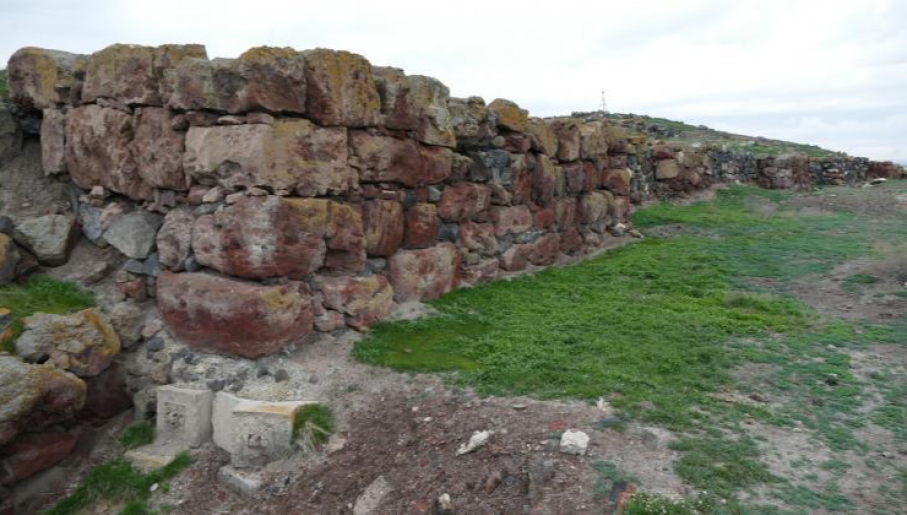Anthropology
Related: About this forumPolish-Armenian team discovers 'Golden tomb' dating back 3,200 years
mz/kb 25.03.2023, 18:43

Metsamor. View of the citadel. Photo: PAP/Szymon Zdziebłowski
During excavation in Metsamor, Armenia, a group of archaeologists consisting of Polish and Armenian scientists has uncovered a “golden tomb” with two skeletons (a man and a woman). While exploring their crypt, the team discovered three gold necklaces that date back to the era of Ramesses II's rule in ancient Egypt.
Metsamor is one of the most famous archaeological sites in Armenia, located several dozen kilometers west of Yerevan.
It was a cist grave, meaning that the two skeletons were found in chambers dug in the ground and lined with large stones. Researchers also found the remains of a wooden burial bed.
According to archaeologists, the bones were well preserved. Both skeletons had slightly crouched legs. Preliminary estimates show that the couple died at the age of 30-40.
More:
https://tvpworld.com/68739655/polisharmenian-team-discovers-golden-tomb-dating-back-3200-years
~ ~ ~
Metsamor Fortress
Posted by Sjur Cappelen Papazian on October 27, 2013


Metsamor (which means “black swamp” or “black quicksand”) is a town and an urban community in the Armavir Province of Armenia. The modern town of Metsamor was built in 1979 to house the employees of the Metsamor Nuclear Power Plant, but the archaeological site of Metsamor Castle shows that the area has been populated from the 5th millennium BC until the 18th century AD.
In the center of the Ararat Valley, located just outside the village of Taronik, the ancient fortress Metsamor, lying as it does some 35km southwest of Yerevan, occupies a volcanic hill with its near lying area. Prompted to life by the fertile valley with its rich water resources, vegetation and hunting grounds, girdled by the meandering Metsamor River, the fortress, as before, is the site of cool bubbling springs ingusing life into the entire area.
The regular excavations of the tombs of Metsamor castle began in 1965, and are still in progress, led by Professor Emma Khanzatian. The most recent excavation work occurred in the summer of 1996, along the inner cyclopic wall. They has yielded cultural layers dating to the Aenolithic, three periods of the Bronze Age (early, middle and late), the early and developed Iron Age (Pre-Urartian, Urartian and Antique) and the Middle Ages.
Excavations have shown strata of occupancy going back to the Neolithic period (7,000-5,000 BC), but the most outstanding features of the site were constructed during the early, middle and late Bronze Ages (5000-2,000 BC). Inscriptions found within the excavation go back as far as the Neolithic period , and a sophisticated pictograph form of writing was developed as early as 2000-1800 BC. The “Metsamor Inscriptions” have a likeness to later scripts, which influenced Mashtots’ alphabet (see Evolution of the Armenian Alphabet).
More:
https://aratta.wordpress.com/2013/10/27/metsamor-fortress/
2naSalit
(99,392 posts)Thanks!
Bookmarking.